Did you know that over 60% of customers report their top frustration as being transferred multiple times during a single service call? In today's fast-paced world, AI-powered call routing is not just a technological upgrade—it's a revolutionary solution that is drastically reducing unnecessary transfers, enhancing customer satisfaction, and making call centers smarter and more efficient. If you're still relying on outdated systems, you're missing out on one of the most impactful advances in customer service and contact center management. Dive in to discover how this game-changing technology is transforming call routing and what you can do to seize these benefits today.
AI-Powered Call Routing: Revolutionizing Call Centers with Artificial Intelligence
Incorporating AI-powered call routing into your contact center isn’t just an upgrade—it's a transformation. Traditional call routing systems often rely on rigid menu options or basic criteria, inadvertently increasing wait times and frustrating customers as they’re shuffled from agent to agent. In contrast, AI-powered solutions use advanced machine learning and customer data analysis to instantly connect callers to the right resource, reducing hold times and improving first-call resolution rates.
This new era of intelligent call routing in call centers leverages real-time insights—such as previous interactions, caller intent, and even call volume fluctuations—to inform routing decisions. The result? A dramatic reduction in operational bottlenecks, increased customer satisfaction , and empowered agents who can dedicate their expertise to the right queries. Contact centers adopting AI are seeing measurable improvements in their key performance indicators and customer loyalty levels.
A Surprising Statistic: The Hidden Cost of Inefficient Call Routing in Contact Centers
During peak inbound call periods, inefficient call routing can result in more than just minor aggravations for customers—it can also create significant financial losses for businesses. According to industry data, nearly two-thirds of customers will abandon a brand after multiple poor customer service experiences, often linked directly to prolonged wait times and poor call routing strategies. These hidden costs, including lost revenue and decreased employee morale, make upgrading to an AI-powered routing system not just a luxury but a vital necessity for forward-thinking organizations.
“Over 60% of customers say that being transferred multiple times is a top frustration. AI-powered call routing reduces unnecessary transfers and empowers customer service teams to deliver fast resolutions.”
What You'll Gain From Mastering AI-Powered Call Routing
- Understanding the fundamentals of AI-powered call routing
- How intelligent call routing improves customer experience
- Key performance benefits for contact centers and call centers
- Implementing effective routing strategies using artificial intelligence
- Real-world use cases and actionable steps
By mastering the concepts behind AI-powered call routing , you unlock more than improved customer experience . You’ll gain a competitive edge in optimizing operational costs, scaling easily during call volume surges, and aligning your routing strategy with business goals. Businesses that take full advantage of intelligent routing report not only measurable reductions in wait times but marked improvements in employee efficiency and customer satisfaction .
As customer expectations continue to rise, the ability to adapt and implement modern call routing systems driven by artificial intelligence will be the key differentiator between industry leaders and everyone else. Understanding and executing on these fundamentals is the first step toward transformative business growth.
Defining AI-Powered Call Routing in Modern Contact Centers
AI-powered call routing in contemporary contact centers represents a fundamental shift away from legacy systems that depend on static rule sets. Instead, artificial intelligence dynamically matches each incoming call to the best-suited agent based on real-time data—such as the caller’s previous interactions, query type, and even predicted mood or urgency. This approach ensures that high-value or complex inquiries are immediately prioritized and handled by the most skilled agents, while routine queries can be swiftly resolved via automated channels.
The AI component continuously learns and refines its algorithms, using large volumes of customer data to anticipate needs and identify patterns in customer interactions . This results in a more adaptive call routing system that consistently improves performance and reduces both operational risk and human error within the call center environment.
How AI-Powered Call Routing Differs From Traditional Call Routing Systems

The primary distinction between AI-powered call routing and conventional routing systems lies in the intelligence layer. Traditional systems function on fixed rules—think touch-tone menus or departmental queues—often ignoring the nuance in customer service needs. This rigidity can result in longer wait times , redundant transfers, and a one-size-fits-all experience.
By harnessing machine learning, AI-powered routing analyzes caller information like language preference, historical outcomes, and even current call center traffic in real time to optimize the path for every call. It adapts to new information instantly, while legacy systems can only follow set paths mapped weeks or months prior. This adaptability means large, multi-site contact centers experience radically smoother call volumes management, leading to reduced operational strain and happier customers.
The Role of Artificial Intelligence in Transforming Routing Strategies
Artificial intelligence is at the heart of modern call routing strategy . With the power to process huge amounts of data at lightning speeds, AI provides immediate, objective recommendations for which agent or department should respond to each query. By factoring in workforce availability, agent expertise, location, call volume , and even customer sentiment, AI builds a dynamic, data-driven routing infrastructure.
Additionally, conversational AI and natural language processing allow interactive voice systems to interpret caller intent more accurately than ever before. Rather than relying on a customer to press “1” or “2,” the system understands “I’d like to update my billing address” and routes the call appropriately, streamlining the customer interaction and improving overall satisfaction.
Impact on Customer Experiences and Customer Satisfaction
Few elements impact customer experience as immediately as call routing. With AI-powered call routing , customers notice the difference from the first interaction: calls are routed with less delay, agents are better matched to resolve their queries, and repetitive explanations are minimized or eliminated.
Ultimately, these improvements yield higher customer satisfaction and encourage repeat business. By creating customer interactions that feel personal, efficient, and considerate, contact centers set themselves apart. This approach also reduces the emotional toll on agents who no longer need to resolve misdirected calls, further elevating productivity and morale.
Core Components of an Effective AI-Powered Call Routing System
A high-performing AI-powered call routing system is more than an algorithm running in the background. It’s a well-orchestrated ecosystem of technologies, processes, and data sources designed to work in concert. From interactive voice response to real-time analytics, the success of intelligent call routing depends on the seamless interplay between AI engines and day-to-day contact center operations.
The system ingests all available customer data , interprets caller information , applies advanced analytics, and routes each incoming call in the most strategic way possible. These innovations ensure customer needs are met faster, more accurately, and with less friction for both agents and the business itself.
Interactive Voice Response (IVR) and Conversational AI
Interactive voice response (IVR) technology, enhanced by conversational AI , is initial point of contact for most callers. Powered by machine learning , modern IVR systems engage customers in natural dialogue, greatly reducing the need for complex menu navigation. The AI discerns intent, verifies identity, and either resolves the request or intelligently escalates it within the call routing system .
This combination reduces unnecessary transfers and allows agents to focus on answers only they can provide, dramatically shortening average wait times and boosting customer satisfaction . IVR and AI work together to make sure every call center interaction feels smooth and personalized.
Integration with Contact Center Operations

Seamless integration is essential. An AI-powered call routing system must connect deeply with existing contact center CRM tools, workforce management platforms, and analytics suites to be truly effective. This allows the system to draw on all available customer data to make informed, real-time routing decisions .
The benefit is twofold: call center agents are empowered with contextual information when a call is connected, and team leaders have better visibility into ongoing call volumes or bottlenecks across every channel. The result is a more agile, data-driven environment that can flex as business and customer needs evolve over time.
Data-Driven Routing Strategies in Call Centers
Unlike traditional methods, AI-powered call routing systems rely heavily on actionable analytics. They use predictive models to forecast call volume and customer demand, proactively matching those insights against available workforce and resource skill sets. These models can adjust queue priorities, dynamically allocate agents based on need, and deliver personalized experiences that are consistently optimized for each individual customer.
A data-driven routing strategy helps call centers anticipate call volume spikes and prevent resource overload, ensuring no customer is left waiting for long. This approach unlocks powerful opportunities to continually refine the customer experience at scale.
| Feature | Traditional Routing System | AI-Powered Routing System |
|---|---|---|
| Decision Making | Static, rules-based, pre-defined logic | Dynamic, adaptive, data-driven, real-time analytics |
| Customer Data Utilization | Limited (basic caller ID, menu selections) | Advanced (history, sentiment, preferences) |
| Routing Flexibility | Rigid department-based transfers | Personalized, context-aware routing |
| Response to Call Volume Spikes | Manual queue adjustment | Automated resource allocation, predictive scaling |
| Impact on Wait Times | Often high, can increase during peaks | Consistently reduced across all scenarios |
Benefits of Implementing AI-Powered Call Routing in Call Centers
Adopting AI-powered call routing creates benefits that span every aspect of call center operations. These range from tangible metrics, such as lower average wait time and higher first-call resolution rates, to less quantifiable (but equally valuable) outcomes like elevated brand reputation and improved agent morale. Leveraging AI also ensures scalable and reliable performance management as business needs change.
The holistic improvement means both the operational side and customer experience are enhanced. Over time, these advantages create a positive feedback loop: as wait times decrease and satisfaction rises, so too does customer loyalty and business growth.
Minimizing Wait Times and Enhancing Customer Satisfaction

One of the most powerful outcomes of AI-powered call routing is the significant reduction in wait times and hold times . By constantly analyzing changing conditions—such as sudden increases in call volume —AI ensures that customer queries are never left waiting in limbo. This optimizes both front-end service and backend staffing, delivering near-immediate responses for priority or routine requests.
These shorter wait times mean improved customer satisfaction , often resulting in better ratings, word-of-mouth referrals, and lasting connections between customer and brand. It's not just about speed; it’s about ensuring each interaction feels valued and uniquely attended to.
Optimizing Resource Allocation Amid High Call Volumes
During periods of high call volume , traditional call routing systems can become overwhelmed, leading to bottlenecks and resource shortages. AI-powered call routing changes this dynamic by distributing workload intelligently, prioritizing urgent calls, and even redirecting traffic between multiple contact centers or remote teams.
This data-driven approach means you're not just managing increased volumes—you’re actively maximizing each agent’s time and skill. As a result, operational efficiency surges, overtime costs are minimized, and service levels are maintained even as demand fluctuates.
Improving Customer Interaction Outcomes
When the right customer connects with the right agent on the first attempt, the entire customer interaction is transformed for the better. AI-driven call routing ensures every customer is met with an agent equipped with the knowledge, context, and skillset necessary to address their unique circumstance.
This match-making capability leads directly to higher first-call resolution rates and more consistent customer happiness. Additionally, agents feel more confident and fulfilled as they solve real problems rather than rerouting misallocated calls—a win for everyone involved.
“AI-powered call routing ensures the right customer reaches the right agent, every time, driving first-call resolutions and boosting overall customer experience.”
Intelligent Call Routing: Use Cases and Real-World Examples
Theory is important, but nothing demonstrates the value of intelligent call routing more than practical results. Across industries, organizations are using AI-powered call routing to solve critical operational challenges and deliver consistently better customer service. From healthcare to retail, these examples highlight the flexibility and strength of AI-driven systems.
In real-world deployments, businesses are reporting fewer abandoned calls, faster resolution times, and a measurable increase in customer satisfaction . Let’s explore two telling scenarios where these improvements have proven indispensable.
Case Study: Reducing Wait Times Across Multiple Contact Centers
A major financial services provider operating multiple call centers implemented AI-based call routing and saw their average wait time drop by 40%. Customers were quickly and accurately connected with agents specializing in their specific product or inquiry, and almost all first interactions ended in successful resolutions.
By coordinating resources and sharing real-time data, the organization could flex agents between sites to meet changing call volume demands. The result was fewer abandoned calls, happier customers, and more consistent operational flow across all locations.
Scenario: Handling Variable Call Volumes with Advanced Routing
Imagine a major retailer dealing with massive spikes in call volume during holiday sales. By implementing AI-powered call routing , they are able to automatically prioritize urgent service requests, allocate overflow to remote teams, and keep wait times steady even under heavy load.
These results are not confined to one sector:
- Healthcare providers improving emergency call response
- Financial institutions prioritizing high-value customers
- Retailers managing seasonal spikes with automated call routing
Best Practices for AI-Powered Routing Strategy Implementation
Executing a successful AI-powered routing strategy requires more than just software. It’s about aligning your AI tools with your customer service philosophy, maintaining rigorous data and privacy standards, and building a culture of continuous learning and improvement. Let’s look at key considerations and tactics for a winning implementation.
A well-developed plan will maximize ROI, minimize disruption, and ensure buy-in from agents, leadership, and crucially—your customers.
Aligning AI-Powered Call Routing with Customer Service Goals

The best implementations begin with a clear vision of what you want AI to achieve. Identify specific customer experience or operational targets, such as lowering wait times , raising first-call resolution , or improving agent morale. These end-goals will shape how the routing strategy is configured and measured.
Collaboration across IT, operations, and customer service teams is essential—shared input leads to solutions that serve everyone and provide the agility needed to adapt as your business grows.
Ensuring Data Privacy and Compliance in Call Routing Systems
Data privacy and security are paramount when working with customer data. AI-powered call routing systems must be developed and maintained with compliance front-of-mind, ensuring that all personal information is protected and handled in accordance with regulations such as GDPR or CCPA.
Clear data handling policies and periodic audits help reinforce trust with customers, making them more likely to engage positively with your brand. IT and compliance experts should be involved from the start to build a secure and legally compliant foundation.
Monitoring and Optimizing for Continuous Improvement
After launch, the journey is far from over. Leading call centers treat optimization as an ongoing process, using AI itself to surface new insights and areas for enhancement. Regular reviews—including agent feedback, analytics, and customer satisfaction data—ensure the routing system stays finely tuned.
Continuous monitoring allows you to rapidly adjust to new patterns, unexpected spikes in call volume , or shifts in customer preferences. This culture of improvement helps call centers remain industry leaders, prepared for whatever tomorrow brings.
Overcoming Common Challenges in AI-Powered Call Routing
Despite its huge benefits, implementing AI-powered call routing isn’t always straightforward. Obstacles like system integration, user adoption, and change management can slow or complicate deployment. However, these hurdles are manageable with thoughtful planning and a commitment to continuous training.
Understanding and addressing these barriers up front lays a solid foundation for your call center’s digital transformation journey.
Addressing Integration Hurdles in Contact Centers

Bringing AI into established contact center environments means working with legacy technologies, multiple vendors, and complex streams of data. Successful integration requires careful mapping of all call routing workflows, early stakeholder engagement, and possibly investment in API-based architectures that reduce friction and promote rapid scalability.
Staggered rollouts, close vendor partnerships, and strong project management can reduce risk and ensure early wins that build momentum within your organization.
Managing Change and Training Customer Service Teams
No technology will succeed without the full engagement of your frontline staff. Invest in robust training and clear communication to help customer service teams understand how AI-powered call routing will support their daily work, reduce stress, and create better customer experiences.
Change can cause anxiety, but proactive support, ongoing feedback loops, and sharing early successes pave the way for high adoption rates and a thriving, empowered call center workforce.
Key Metrics to Track the Success of AI-Powered Call Routing
- Average wait time reduction
- First-call resolution rate
- Customer satisfaction and Net Promoter Scores (NPS)
- Call agent productivity improvements
- Customer interaction quality metrics
To measure the true impact of your AI-powered call routing system , it’s essential to focus on both customer-facing and back-end metrics. Look for quantifiable improvements in average wait time , first-call resolution , and Net Promoter Scores (NPS) . Also, track internal statistics such as agent productivity and the quality of customer interactions for a comprehensive view of success.
Continuously analyzing these metrics allows call centers to prove ROI, identify new training needs, and make data-informed decisions that keep their operations ahead of the curve.
People Also Ask: What is AI Call Routing?
AI call routing refers to the use of artificial intelligence algorithms and data-driven insights to automatically direct inbound calls to the most suitable agent or resource in a contact center. Unlike traditional systems, it leverages real-time data, customer intent, and historical interactions to make fast, intelligent routing decisions that optimize the customer experience and improve key metrics across call centers.
People Also Ask: What is Automated Call Routing?
Automated call routing is a telephony system process where incoming calls are directed to the appropriate agent, department, or self-service function based on predefined rules. When enhanced with AI, automated call routing systems make smarter, context-aware decisions using conversational AI, thus elevating the quality of customer interactions and streamlining contact center workflows.
People Also Ask: What is Routing in AI?
Routing in AI encompasses the use of advanced algorithms to determine the optimal path for delivering a service—in contact centers, it means leveraging AI to match each inbound call with the agent best equipped to resolve the query, based on skillsets, availability, and even customer sentiment.
People Also Ask: How Does Intelligent Call Routing Work?
Intelligent call routing works by integrating artificial intelligence with telephony systems to analyze caller data, intent, and available agents in real time. Using this information, the system automatically routes the call to the agent with the optimal skills or to an automated voice response solution, thereby maximizing efficiency and customer satisfaction.
Frequently Asked Questions on AI-Powered Call Routing
- How does AI-powered call routing enhance agent productivity? AI-powered call routing connects agents with calls that match their specific skills and knowledge, giving them a better chance of resolving the issue on the first call. This reduces time spent on transfers and repetitive inquiries, fuels motivation, and allows agents to focus on high-value interactions.
- What are the security considerations for implementing AI in contact centers? Security in AI-powered call routing centers on safe handling of customer data. Systems must meet the latest compliance standards (e.g., GDPR, CCPA), use strong encryption, and regularly audit user access and data flows to ensure confidentiality and protection against breaches.
- Does AI-powered call routing support omnichannel interaction? Absolutely. Modern AI-powered routing systems can integrate across phone, chat, email, and social media channels. This means customers get a seamless, consistent experience and agents have a unified view of all previous interactions.
- Can AI-powered routing adapt to sudden spikes in call volumes? Yes. AI systems continuously monitor call traffic, agent availability, and service level agreements, dynamically adjusting routing rules in real time to maintain service levels and prevent excessive wait times—even during peak demand periods.
Maximize Customer Success with AI-Powered Call Routing
Harness the transformative potential of AI-powered call routing and elevate your call center operations today by implementing modern, customer-centric routing systems powered by artificial intelligence.
Action Step: Don’t wait—explore and implement AI-powered call routing now to provide your customers with faster resolutions, happier experiences, and support agents who excel with each interaction.
Integrating AI-powered call routing into your contact center can significantly enhance operational efficiency and customer satisfaction. For a comprehensive understanding of how AI is reshaping call routing, consider reading The Role of AI in Call Routing , which explores the transformative impact of artificial intelligence on call routing processes. Additionally, Intelligent Call Routing: What is it and How Does it Work? provides an in-depth look at the benefits and implementation of intelligent call routing systems. These resources offer valuable insights into leveraging AI to optimize your contact center operations and improve customer experiences.
 Add Row
Add Row  Add
Add 




Write A Comment